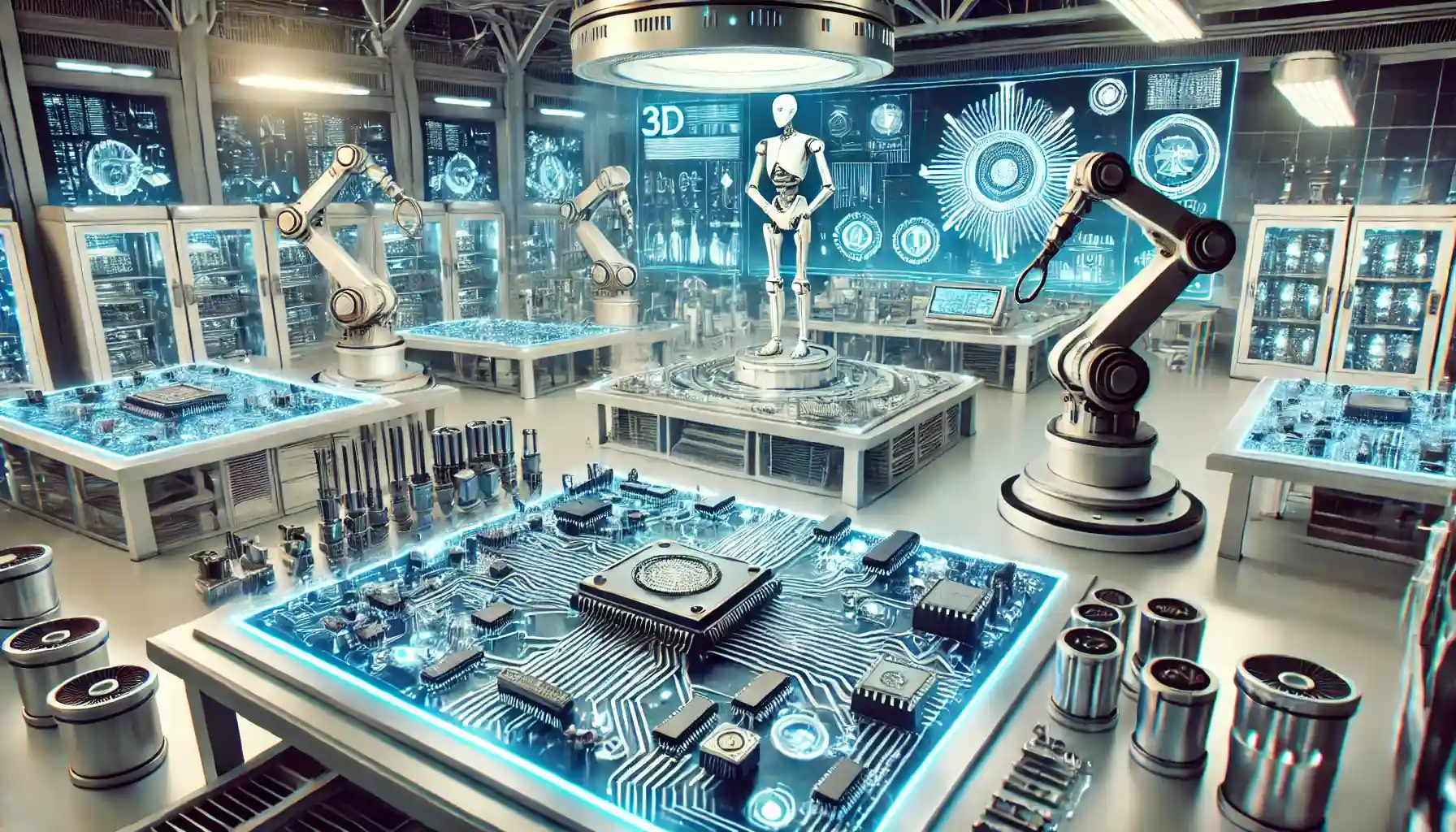As technology continues to evolve at a breakneck pace, one emerging field stands out for its potential to transform everything from consumer devices to industrial applications: 3D electronic. Traditionally, electrical components and circuits have been limited to flat, two-dimensional designs on circuit boards. Thanks to advancements in materials science, additive manufacturing (3D printing), and integrated design processes, 3D electronic structures are now becoming a reality—opening up new frontiers in miniaturization, performance, and multi-functionality.
Table of Contents
In this article, we’ll dive into what 3D electronic systems are, how they work, the benefits they offer across various industries, and the hurdles yet to be overcome. By the end, you’ll have a clearer picture of why 3D electronics could represent the next major leap in electronic design and manufacturing.
Defining 3D Electronic
3D electronic refers to the design, production, and integration of electronic components and circuits in three-dimensional structures or layers. Instead of the conventional approach—where electronic components are assembled on a flat PCB (Printed Circuit Board)—3D electronics can involve stacking, embedding, or printing circuits within or onto complex shapes. This multi-dimensional approach offers new levels of design flexibility, enabling electronic devices to be:
- More compact
- More durable
- Potentially lighter and more functional
3D electronics can be realized in multiple ways, including 3D integrated circuits (3D-ICs), conformal printing of conductive traces on curved surfaces, and embedding electronic components within 3D-printed structures. As the field advances, innovators are finding it increasingly feasible to build multi-layered circuits that can conform to the geometry of any given product—be it a smartwatch, drone, or medical implant.
How 3D Electronic Works
1. Layer-by-Layer Assembly
One hallmark of 3D electronic manufacturing is the layer-by-layer approach. This typically involves:
- Substrate Preparation: A layer of material (often a polymer) that acts as a base.
- Additive Processes: Conductive inks or pastes are deposited via printing methods such as aerosol jet printing, inkjet printing, or screen printing.
- Curing and Sintering: The conductive layers are hardened through heat or UV treatment.
- Component Placement: Electronic chips or other devices are embedded or attached within the structure as successive layers are added.
2. 3D Integration and Stacking
Another avenue is the creation of 3D integrated circuits, where multiple IC layers (each containing its own transistors, interconnects, and logic) are stacked vertically. Through-silicon vias (TSVs) connect these layers, facilitating faster communication and reducing wire lengths compared to traditional side-by-side designs.
3. Hybrid Approaches
It’s also possible to combine additive manufacturing for shaping the substrate with pick-and-place technology for installing traditional SMD (Surface-Mount Device) components. This “hybrid” approach leverages the strengths of both 2D and 3D designs—incorporating proven off-the-shelf components while adopting new form factors.
Key Technologies Enabling 3D Electronics
- 3D Printing (Additive Manufacturing)
- Fused Deposition Modeling (FDM): Melts plastic filaments to build layers.
- Stereolithography (SLA): Uses UV light to cure liquid resin.
- Selective Laser Sintering (SLS): Fuses powdered materials with a laser beam.
- Aerosol Jet / Inkjet Printing: Deposits conductive inks precisely on 3D surfaces.
- Conformal Coating and Direct Write
- Aerosol Jet Printing: Allows for conductive traces to be printed on curved or non-planar surfaces.
- Laser Direct Structuring (LDS): Laser activation of a plastic part, followed by electroless plating.
- Advanced Materials
- Conductive Polymers: Enable flexible circuitry with decent conductivity.
- Nanoparticle Inks: Offer low-resistance metal traces once sintered.
- Epoxy Resins and Composites: Provide mechanical stability, heat resistance, and can embed electronic components.
- 3D IC and Packaging
- Through-Silicon Vias (TSVs): Vertical electrical connections that reduce interconnect lengths between stacked IC layers.
- Wafer Bonding: The merging of multiple wafer layers under pressure and temperature to form 3D structures.
Applications and Use Cases
1. Consumer Electronics
- Wearables and Smart Devices: Watchbands, fitness trackers, and other body-worn electronics can integrate circuits along curved surfaces for improved ergonomics.
- Smartphones and Tablets: Reduced footprints and multi-layer stacking can enhance battery life, processing power, and memory density.
2. Automotive
- In-Cabin Electronics: Buttons, sensors, and displays integrated into curved dashboards without the need for separate circuit boards.
- Lighting Systems: LED arrays molded into 3D shapes that conform to aerodynamic car designs.
3. Medical Devices
- Implantables: Customized electronics embedded in biomaterials can precisely fit a patient’s physiology.
- Wearable Health Trackers: Low-profile devices that measure vital signs continuously, taking advantage of flexible 3D designs.
4. Aerospace and Defense
- Satellite Components: 3D-printed antenna structures or sensor arrays reduce weight and assembly complexity, crucial for space missions.
- Drones and UAVs: Compact and lightweight control systems that integrate seamlessly into aerodynamic bodies.
5. Industrial and IoT
- Smart Sensors: IoT devices in harsh industrial environments can be built with robust 3D-printed casings and integrated circuitry.
- Robotics: Custom-shaped, embedded actuators and control boards for more efficient movement and reduced wiring clutter.
Advantages of 3D Electronics
- Space and Weight Efficiency
- Stacking or embedding circuits can significantly reduce the overall volume and weight, a critical factor for aerospace, portable electronics, and wearable devices.
- Enhanced Performance
- 3D integrated circuits offer shorter interconnect distances, improving signal speed and reducing power consumption.
- Design Flexibility
- Curved, organic, or otherwise unconventional shapes can incorporate electronic functionality without traditional layout constraints.
- Reduced Wiring and Connections
- Embedding sensors, processors, and antennas into the same substrate minimizes connectors, cables, and potential points of failure.
- Streamlined Manufacturing
- A single printing or molding process may combine mechanical and electrical functions, cutting down on assembly steps and cost.
Challenges and Limitations
- Material Compatibility
- Printing conductive metal layers on flexible substrates demands specialized inks and sintering processes that won’t degrade the base material.
- Thermal Management
- Stacked or embedded electronics can trap heat more easily, requiring sophisticated cooling strategies or materials with high thermal conductivity.
- Manufacturing Complexity
- Multi-process workflows involving 3D printing, pick-and-place, sintering, and curing are not always straightforward. Achieving large-scale production at a reasonable cost remains a challenge.
- Testing and Reliability
- Diagnosing faults in a 3D-embedded circuit is more difficult than troubleshooting a traditional 2D PCB. Reliability tests must be adapted to account for these unique geometries and materials.
- Standardization
- Many standards for electronics packaging and assembly are based on planar PCBs. The industry may need to develop new guidelines and testing protocols for 3D integrated products.
Future Outlook and Emerging Trends
- Scaled Production
- As 3D printing and advanced packaging costs fall, it will become more feasible to mass-produce 3D electronic devices.
- Multi-Material Printing
- Printers capable of depositing multiple materials—conductive inks, insulators, and structural resins—open up new possibilities for “all-in-one” device fabrication.
- Advanced Substrates
- Flexible yet robust substrates will pave the way for foldable, wearable electronics that blend seamlessly into clothing or skin-contact sensors.
- Quantum and Photonics Integration
- 3D structures might soon host not just electrical but also optical pathways, potentially accelerating the convergence of electronics and photonics.
- Sustainability
- By consolidating parts and reducing waste, 3D electronic manufacturing can contribute to more eco-friendly production cycles.
Conclusion
From consumer electronics to high-stakes aerospace missions, 3D electronic is poised to reshape how engineers, designers, and manufacturers think about circuit design and device architecture. By freeing electronics from the confines of flat circuit boards, 3D manufacturing opens a realm of possibilities—lighter, smaller devices, enhanced functionality, and even new forms of products once considered unfeasible.
Of course, progress in this area depends on overcoming material, process, and cost barriers. Yet as industry collaborations, academic research, and advanced printing methodologies gain traction, the shift to 3D electronics feels increasingly inevitable. It’s not merely about adding layers or saving space; it’s about forging a new paradigm in how we conceive and deliver electronic innovation in a three-dimensional world.
For more insights into 3D electronics research, market trends, and best practices, you can explore the IPC International, a global association that publishes standards, guidelines, and resources for electronics manufacturing, including emerging 3D fabrication techniques.

